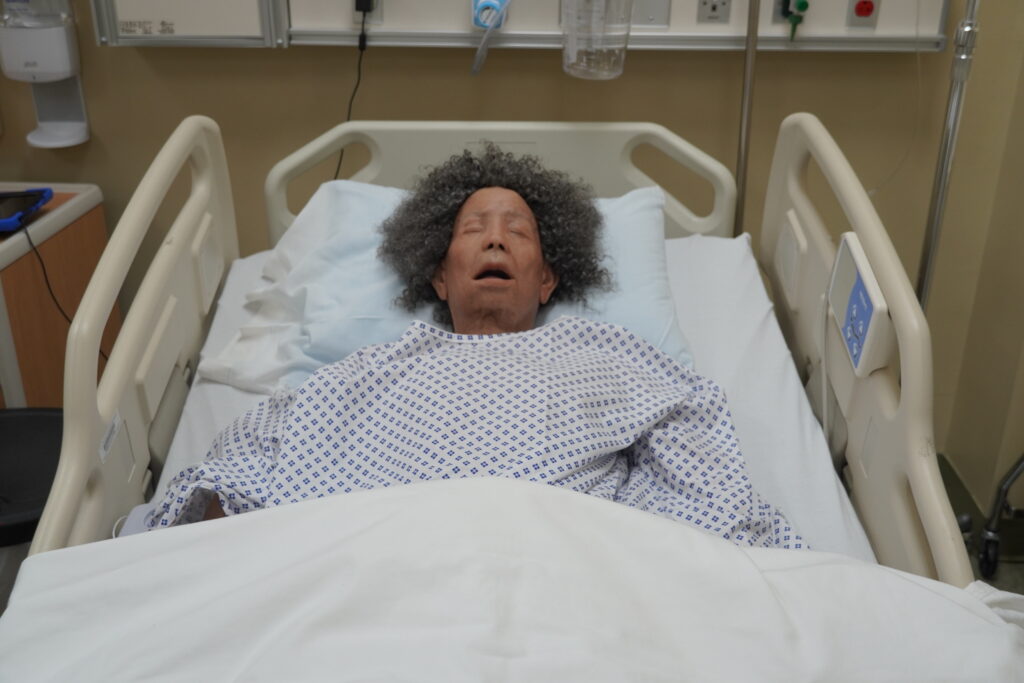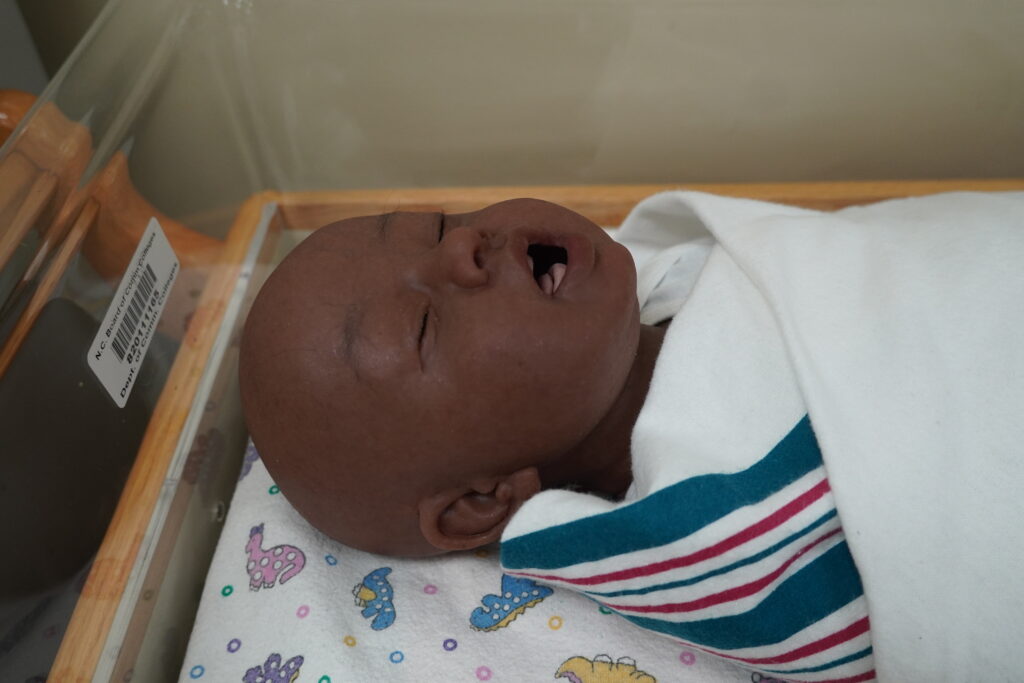Lifelike Mannequins Enhance Nursing Program Experience

Cleveland Community College (CCC) has taken another step forward in enhancing its nursing program by acquiring new, highly realistic mannequins. These state-of-the-art mannequins are designed to provide students with a more immersive and lifelike training experience, helping to bridge the gap between classroom learning and real-world clinical settings.
A New Level of Realism
The new mannequins, custom-designed to reflect diverse patient demographics, bring a new level of authenticity to nursing simulations. Their lifelike skin texture includes natural features such as moles, fingernails, and sewn-in hair, making them far more realistic than traditional models. Their weight and limb flexibility mimic actual patients, allowing students to experience the true physicality of patient care, such as performing skin assessments and repositioning a patient.

“These mannequins are designed to promote realism,” said Lori Waris, simulation lab coordinator at CCC. “The technology is advancing so fast, and we want to ensure our students have access to the best possible training tools.”
CCC already has mannequins that can be programmed for different patient scenarios to provide hands-on learning, but those mannequins do not look or feel as real as these. “Students often say they have a difficult time talking to those ‘patients’ when performing a care scenario,” said Waris. The addition of these new models significantly enhances the visual and tactile realism of simulation-based training, helping students prepare for real-world patient care more effectively.
Interactive Technology for Enhanced Learning
Unlike older models, the electronic components of these mannequins operate externally, providing an advanced virtual monitoring system. Through Bluetooth capabilities, instructors can place a speaker near the mannequin to simulate real-time patient interactions, making the training even more dynamic. Students can hear specialized sounds through a simulated stethoscope, such as lung sounds indicative of COPD, helping them to develop critical assessment skills.
Additionally, the infant mannequin is designed to closely resemble a four-month-old baby, with a naturally floppy head and realistic weight distribution, giving students a true-to-life pediatric experience.
Custom-Made for CCC
Each mannequin was hand-designed to meet CCC’s specific needs. The nursing department could select skin tones and even add simulated wounds if needed. These enhancements ensure students receive a more diverse and comprehensive learning experience.

The instructors also plan to incorporate wearable devices to simulate low-volume care scenarios, including chest tube management, tracheostomy care, and IV insertion. As part of this initiative, standardized patients—real individuals trained to act as patients—will wear these devices to further enhance simulation-based learning.
Looking to the Future
Although the mannequins have not yet been integrated into coursework, CCC plans to begin using them in the fall once customized simulation scenarios are developed.
“We are very fortunate here that we have these resources,” Waris said. “I’ve visited other simulation labs where they have some wonderful equipment that’s just sitting in a closet. Everything we’ve purchased we use well. Our goal is to give students the best possible experience with simulation technology.”
CCC’s commitment to staying at the forefront of nursing education ensures that students graduate with the skills and confidence they need to provide exceptional patient care. By continuously evolving and integrating the latest advancements in simulation, the college remains dedicated to preparing the next generation of healthcare professionals.